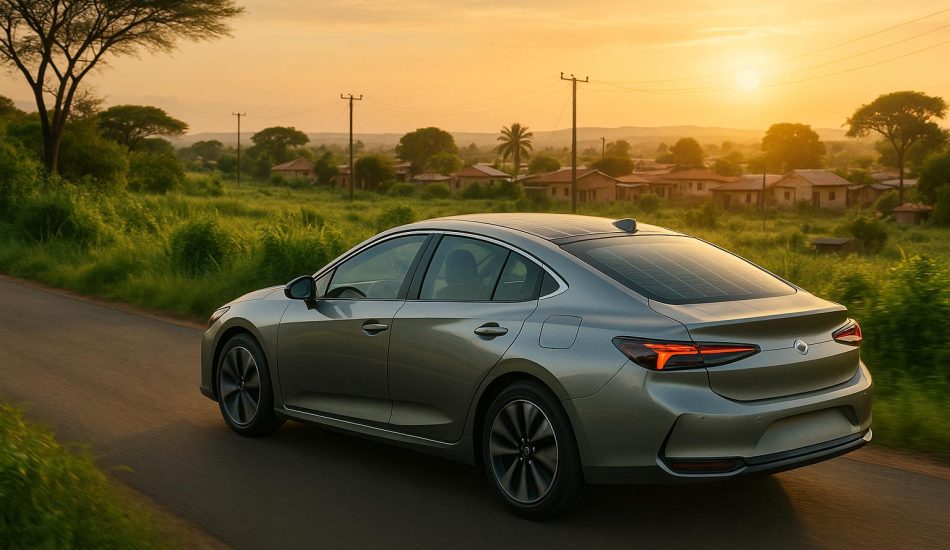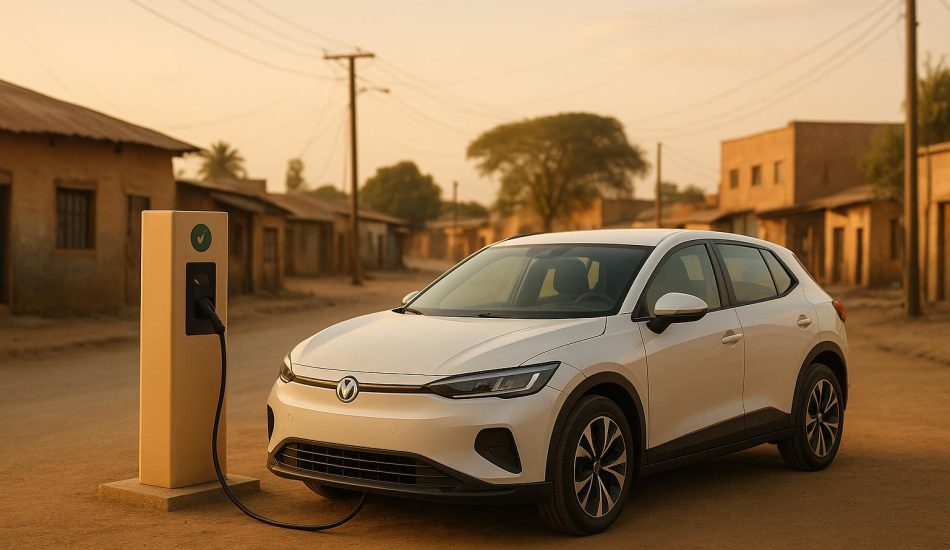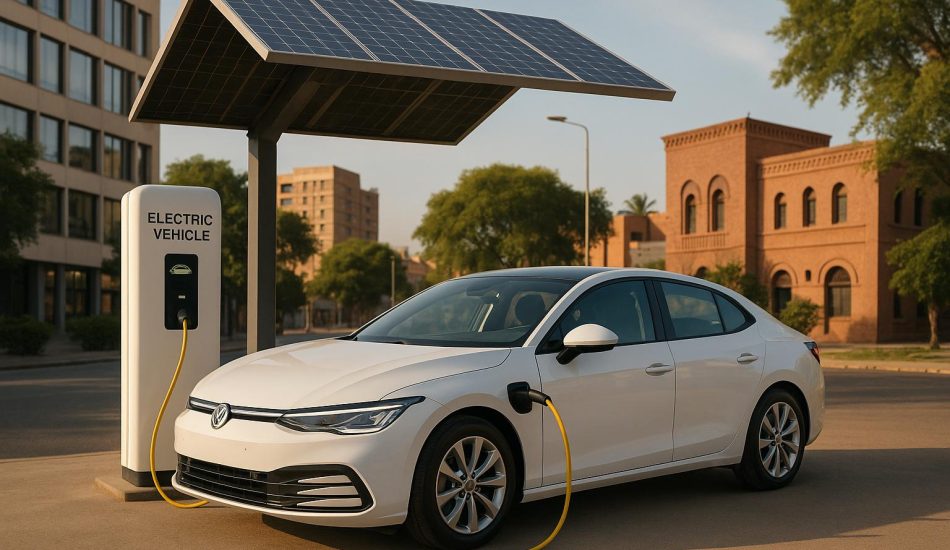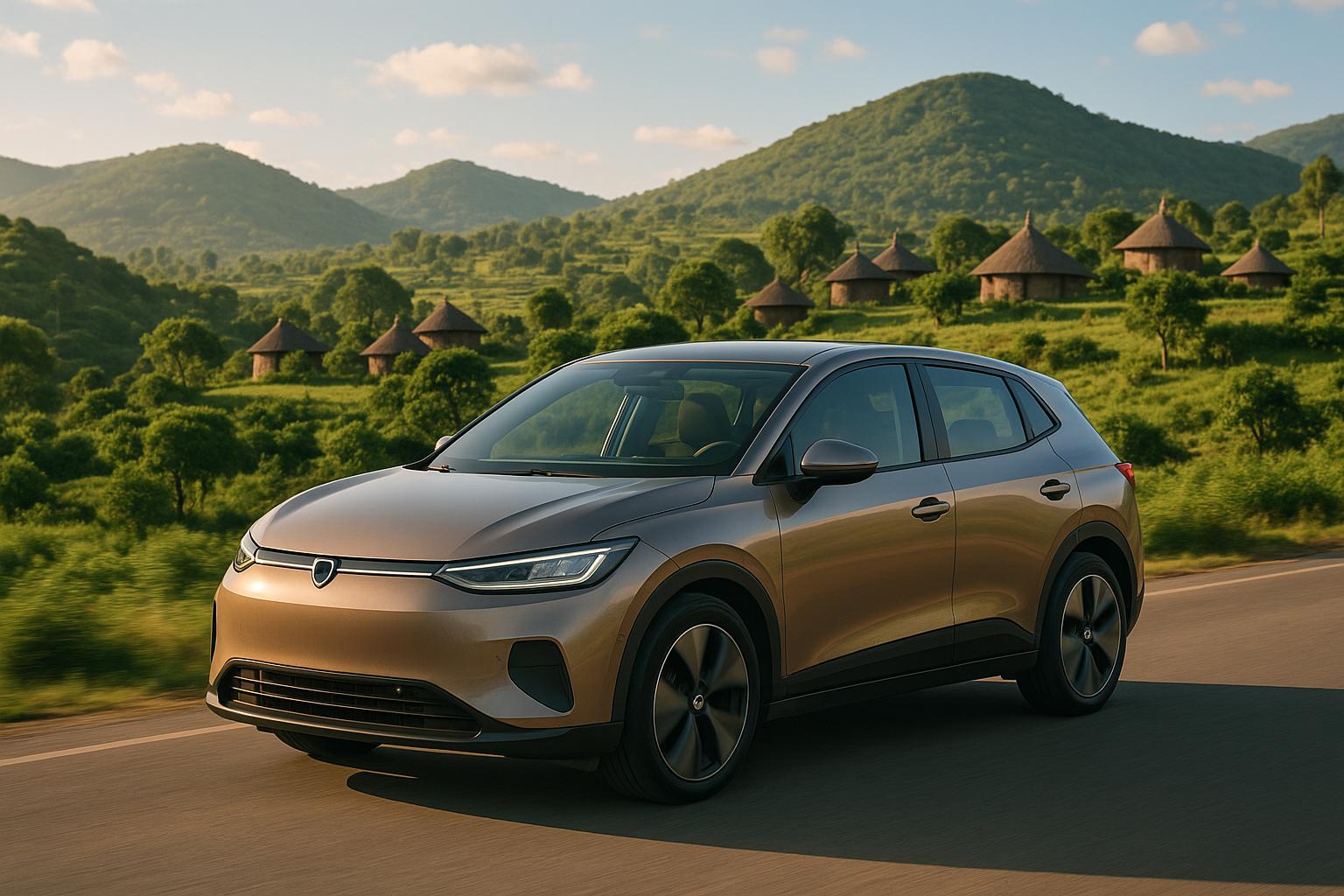
Ethiopia is embracing electric vehicles (EVs) faster than ever. With over 100,000 EVs on the road and a goal to reach 500,000 by 2030, the country is making bold moves, including banning internal combustion engine (ICE) vehicle imports in 2024. Low electricity costs ($0.03/kWh), reduced EV import taxes (15%), and growing investments in charging infrastructure are driving this shift. But challenges like high upfront costs, limited rural charging stations, and affordability remain.
Here are five EVs tailored for Ethiopia’s market:
- GAC Aion Y: Affordable SUV ($15,000–$17,500) with a 286-380 mile range, local assembly plans, and advanced features like autonomous driving.
- BYD Atto 3: Compact SUV ($47,500) with a 214-261 mile range, premium performance, and compatibility with Ethiopia’s charging network.
- Volkswagen ID.4: Mid-size SUV ($22,400–$58,720) offering a 263-291 mile range, fast charging, and a premium driving experience.
- Marathon E-Series: Locally assembled EV with lower costs and easier access to parts but shorter range.
- Hyundai Kona Electric: Compact SUV ($32,975–$41,150) with a 200-261 mile range, multiple trims, and reliable charging options.
Quick Comparison
| Vehicle | Price Range (USD) | Range (Miles) | Local Assembly | Charging Compatibility | Key Features |
|---|---|---|---|---|---|
| GAC Aion Y | $15,000–$17,500 | 286–380 | Planned | Home & public charging | Affordable, advanced tech, long range |
| BYD Atto 3 | $47,500 | 214–261 | No | GB/T & CCS2 standards | Premium SUV, proven performance |
| Volkswagen ID.4 | $22,400–$58,720 | 263–291 | No | European standards | Fast charging, premium quality |
| Marathon E-Series | TBD | Shorter range | Yes | Limited | Locally made, cost-effective |
| Hyundai Kona | $32,975–$41,150 | 200–261 | Yes | Level II & DC fast | Multiple trims, reliable range |
Ethiopia’s EV market is evolving, but choosing the right EV depends on your budget, location, and charging access. Urban buyers may prefer the GAC Aion Y or BYD Atto 3, while rural drivers might consider the Volkswagen ID.4 or Hyundai Kona Electric for their longer ranges. The locally made Marathon E-Series offers a cost-effective alternative for basic needs. As infrastructure grows, EVs are becoming a practical option for more Ethiopians.
BYD e2 ከገበያ መኪኖች በምን ይሻላል? ወይስ ያንሳል? | 2025 BYD Electric Car Review in Ethiopia
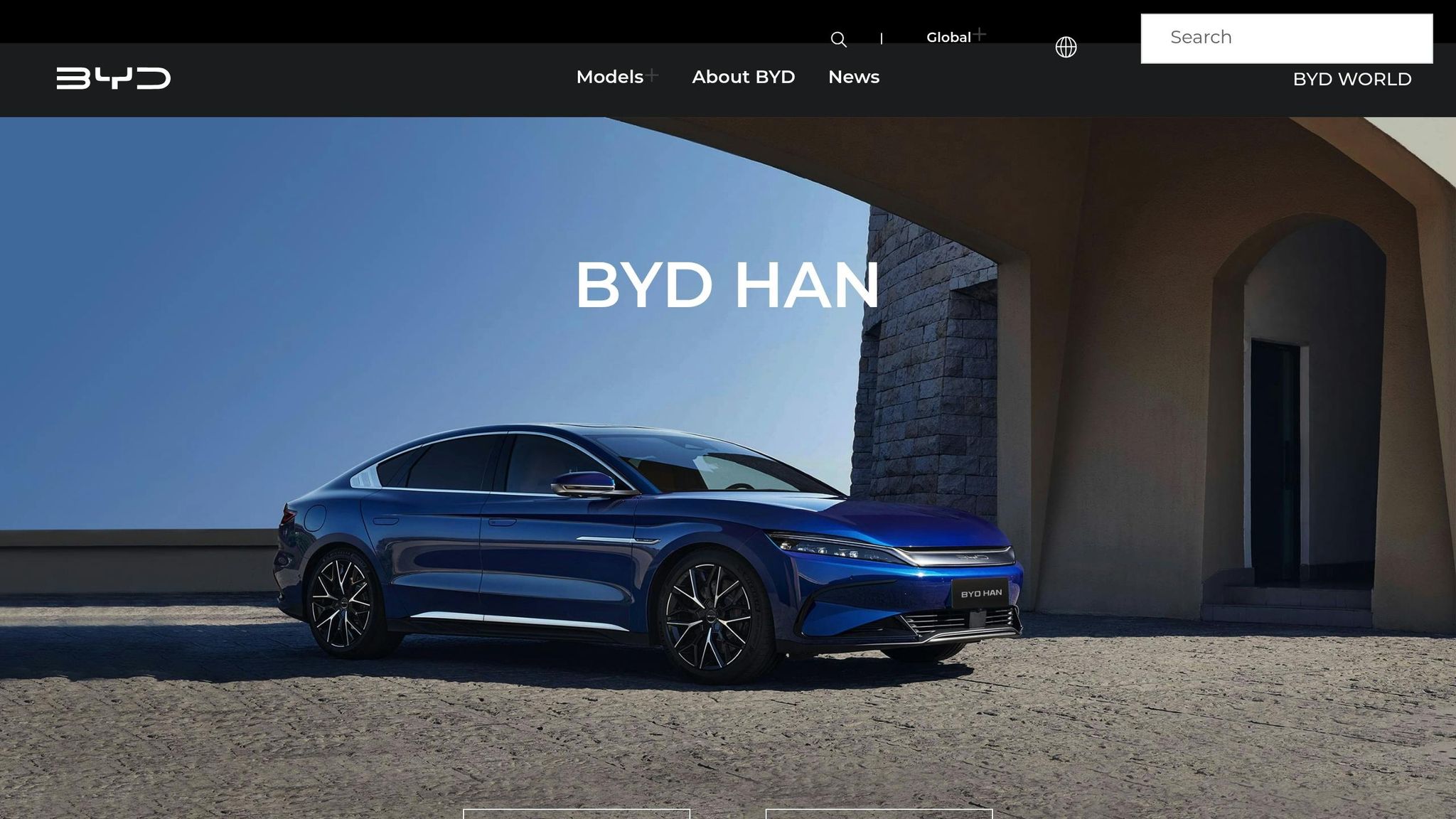
1. GAC Aion Y
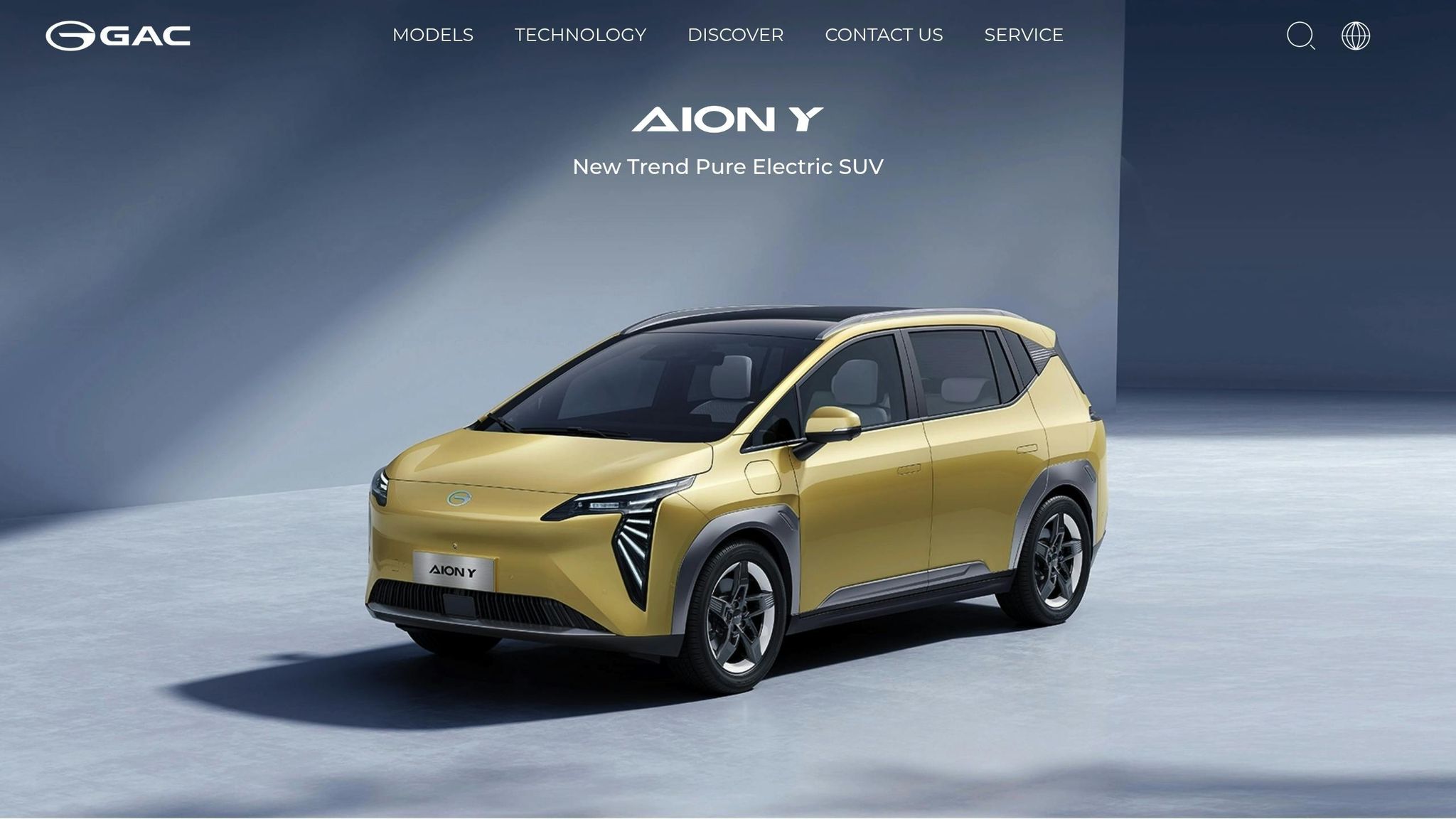
The GAC Aion Y is a budget-friendly electric SUV from China, designed with Ethiopia’s growing market in mind.
Price Range (USD)
Priced between $15,000 and $17,500 for export, the Aion Y stands out as an affordable option compared to high-end electric vehicles. Its competitive pricing makes it appealing to middle-class families and small business owners looking to switch from traditional gas-powered cars. This affordability is paired with a solid driving range, enhancing its value.
Range (miles)
The Aion Y offers impressive battery options, with ranges spanning 286 to 373 miles for the standard model and 320 to 380 miles for the Plus variants. The top-tier 380-mile range easily surpasses the planned 74-mile distance between Ethiopia’s charging stations, making it a reliable choice for longer trips.
Ground Clearance
Although specific ground clearance details are not provided, the SUV’s design – built on the GEP 2.0 platform – suggests it can handle both urban streets and rural roads effectively. Its design also ensures compatibility with charging infrastructure.
Charging Network Compatibility
The Aion Y is built to work seamlessly with Ethiopia’s expanding charging network. It supports both home charging setups and public charging stations, making it versatile for various charging needs.
Local Assembly
Plans for local assembly, supported by partnerships and government incentives, could make the Aion Y even more accessible in Ethiopia. Producing the vehicle locally would help reduce costs and ensure better availability of spare parts, aligning with Ethiopia’s ambitious goal of having 500,000 EVs on the road within the next decade.
Advanced Features
The Aion Y is packed with tech-savvy features, including the ADiGO 3.0 autonomous driving system and automatic parking. With motor options ranging from 95 to 204 horsepower, it’s well-suited for both city commutes and highway drives.
2. BYD Atto 3
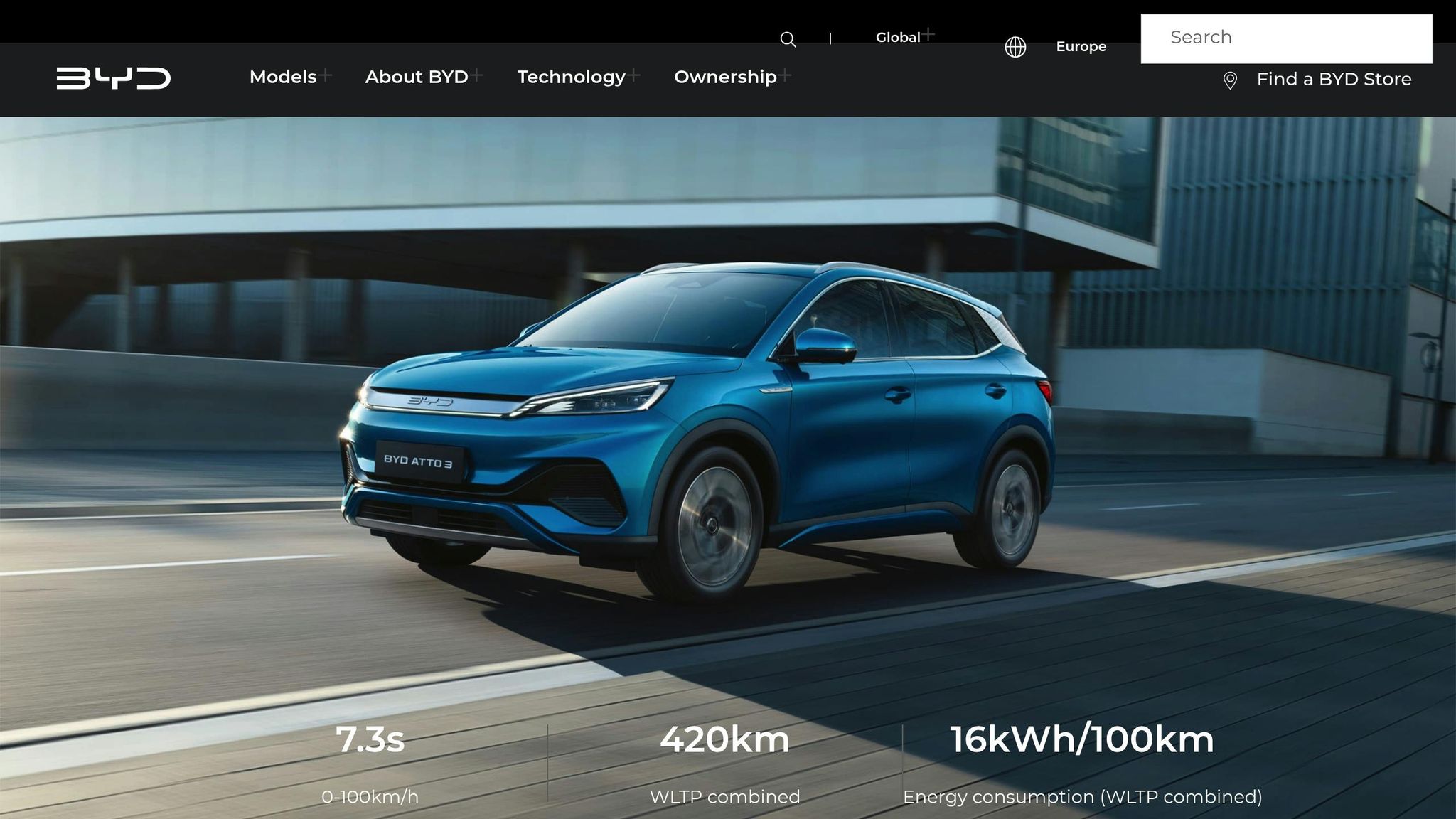
The BYD Atto 3 is a compact SUV from one of China’s top electric vehicle manufacturers. Designed to balance performance with practicality, it offers an attractive option for Ethiopian drivers navigating both city streets and rural roads.
Price Range (USD)
With a price tag of $47,500, the BYD Atto 3 is aimed at premium buyers. For comparison, entry-level EVs in Ethiopia start at around $11,000. Recent reductions in customs and excise taxes – previously exceeding 300% – have made higher-end options like the Atto 3 more accessible to consumers.
Range (miles)
The Atto 3 comes in two versions: the standard model and the extended range variant. Here’s how they compare:
| Model Variant | Range (WLTP) |
|---|---|
| Standard Range | 214 miles |
| Extended Range | 261 miles |
Real-world tests confirm that these range estimates are generally accurate. However, driving at highway speeds around 56 mph (90 km/h) can reduce overall efficiency. Even so, the Atto 3’s range is more than sufficient for Ethiopia’s planned charging station intervals, which will be spaced 31 to 75 miles apart. This makes the SUV a solid choice for both city commutes and longer road trips.
Charging Network Compatibility
The Atto 3 is built to integrate smoothly with Ethiopia’s growing EV infrastructure. It supports both GB/T and CCS2 charging standards, ensuring compatibility with the ultra-fast charging hubs being developed across the country. Ethio Telecom, for instance, has already established ultra-fast hubs in Addis Ababa, including one launched in April 2025 that can serve up to 32 EVs at once.
With Ethiopia’s commitment to installing charging stations every 31 to 75 miles, coupled with new regulations standardizing licensing and power requirements, the Atto 3 is well-equipped to meet the needs of drivers across the country.
Ground Clearance
Thanks to its SUV design, the BYD Atto 3 offers enough ground clearance to handle a variety of road conditions. Whether you’re navigating city streets or tackling less developed rural roads, this compact SUV delivers a blend of urban agility and all-terrain readiness.
3. Volkswagen ID.4

The Volkswagen ID.4 is a mid-size crossover SUV that combines European engineering with practical features, making it a solid contender for Ethiopian drivers looking for a premium electric vehicle (EV). Its blend of performance, practicality, and competitive pricing makes it an appealing option, especially for those navigating diverse driving conditions.
Price Range (USD)
For used models, prices range between $22,400 and $42,800, with one example – a Volkswagen ID.4 Pro Cross – listed at approximately $34,600 (around ETB 5,100,000), though prices may be negotiable.
As for new 2025 models, the starting price is $45,095, with trim options spanning from $42,000 to $58,720. Buyers can also benefit from government tax incentives aimed at encouraging EV adoption in Ethiopia.
Range (miles)
When it comes to performance, the 2025 Volkswagen ID.4 delivers impressive range options. The rear-wheel-drive ID.4 Pro offers an EPA-estimated range of 291 miles[24,26], while the all-wheel-drive Pro AWD variant provides a range of 263 miles[25,26]. This makes the ID.4 well-suited for Ethiopia’s growing EV infrastructure, which aims to place charging stations no more than 74 miles (120 km) apart across the country. Whether it’s daily commuting in Addis Ababa or longer rural trips, the ID.4 is ready to meet the challenge.
Charging Network Compatibility
The ID.4 is fully compatible with Ethiopia’s expanding EV charging network. Designed to meet European standards, it integrates seamlessly with Ethio Telecom’s charging infrastructure. It also supports DC fast charging, allowing drivers to charge from 10% to 80% in just 28 minutes at public fast-charging stations.
"This initiative aligns with Ethio Telecom’s vision as a leading digital solutions provider and is part of our Digital Ethiopia journey." – Frehiwot Tamiru, CEO
Drivers in Ethiopia can choose from three charging options: home charging, public service stations, and commercial charging facilities, ensuring flexibility and convenience.
Ground Clearance
The ID.4’s crossover design offers ground clearance suitable for Ethiopia’s varied road conditions. While exact measurements aren’t provided, its SUV build is designed to handle both paved urban roads and the rougher terrain often found in rural areas. This versatility is particularly important given that only about 12% of rural residents in Ethiopia have access to the electricity grid, meaning drivers may need to travel longer distances on mixed road surfaces to reach charging stations.
sbb-itb-99e19e3
4. Marathon E-Series
The Marathon E-Series represents a significant opportunity for Ethiopia to advance its local electric vehicle (EV) production. Unlike imported EVs, this series focuses on local assembly, which could lower costs and speed up the availability of these vehicles.
Local Assembly
MME’s current setup supports the efficient local production of the Marathon E-Series. Government policies that favor local assembly further enhance this potential. Since the import ban, Ethiopia has brought in over 100,000 EVs, but local assembly could provide a more affordable alternative for consumers. This approach is expected to result in competitive pricing, making EVs more accessible to a larger audience.
Price Range (USD)
While the exact price for the Marathon E-Series hasn’t been finalized, local assembly is expected to bring down costs by eliminating import duties and reducing transportation expenses. To put things into perspective, operating a fuel-powered vehicle in Ethiopia can cost up to four times more than an EV. However, competitive pricing alone won’t be enough – ensuring compatibility with Ethiopia’s growing charging network will also be essential.
Charging Network Compatibility
For the Marathon E-Series to thrive, it must align with Ethiopia’s expanding charging infrastructure. Plans are underway to install charging stations every 50 to 120 kilometers (31 to 74 miles) across the country. Currently, most EV owners rely on home or privately run charging setups due to the limited availability of public stations. The government’s goal to grow the EV fleet to 500,000 vehicles within the next ten years highlights its commitment to building this infrastructure. Still, challenges persist, as only about half of Ethiopia’s 120 million residents have access to the national power grid.
5. Hyundai Kona Electric

The Hyundai Kona Electric offers a great mix of affordability, range, and practical features, making it a strong contender for Ethiopia’s growing EV market. Available in several trims, it caters to different budgets and is well-suited to the country’s developing EV infrastructure and economic conditions.
Price Range (USD)
The 2025 Hyundai Kona Electric comes in four trims, each designed to meet varying needs and price points. The base SE model starts at $32,975, followed by the SEL at $36,975, the sportier N Line at $38,375, and the premium Limited model at $41,150. With local assembly handled by Marathon Motor Engineering, production costs are expected to remain low, making the vehicle more accessible to Ethiopian buyers.
Range (Miles)
The Kona Electric provides a range that adapts well to Ethiopia’s infrastructure. The SE model, equipped with a 48.6 kWh battery, offers an EPA-estimated range of 200 miles. The N Line trim extends this to 230 miles, while the SEL and Limited trims, featuring a larger 64.8 kWh battery, push the range up to 261 miles. In real-world highway conditions, the Limited model achieved approximately 230 miles. These ranges align well with Ethiopia’s goal of placing charging stations no more than 74 miles apart.
Charging Network Compatibility
The Kona Electric is compatible with both Level II and DC fast charging options. Using Level II charging, the SE model can go from 10% to 100% in about 4 hours and 55 minutes, while the higher trims take around 6 hours and 5 minutes. For quicker top-ups, the DC fast charging system can recharge the battery from 10% to 80% in just 43 minutes. Additionally, the Vehicle-to-Load (V2L) feature allows the car to power external devices, a handy perk in areas with limited access to electricity.
Pros and Cons
Each electric vehicle (EV) comes with its own set of strengths and challenges. Here’s a closer look at the trade-offs for some popular models:
| Vehicle | Pros | Cons |
|---|---|---|
| GAC Aion Y | • Quick DC charging (0–80% in just 35 minutes) • Plans for local assembly within three years • Compact SUV, ideal for city driving • Five new models expected by 2028 |
• Limited availability at present • Uncertain local service network reliability • Higher initial cost • Potential early shortages of spare parts |
| BYD Atto 3 | • Well-established brand in Ethiopia • Proven performance in similar climates • Competitive pricing • Compatible with existing charging infrastructure |
• Price hike from 1.7–1.8 million birr to 2.6–2.7 million birr • Lack of local assembly affects affordability • Service centers mainly in urban areas • Unclear resale value |
| Volkswagen ID.4 | • Extremely low charging costs (20 birr for a 20–80% charge) • High-quality build and premium features • Excellent range for highway travel • Access to a global service network |
• Higher price compared to Chinese brands • Limited availability of local parts • Advanced electronics require specialized technicians • Less suitable for rural areas with poor infrastructure |
| Marathon E-Series | • Local assembly keeps costs manageable • Tailored for Ethiopian conditions • Easier access to parts and servicing • Supports local manufacturing jobs |
• Shorter range compared to international brands • Newer brand with less proven reliability • Fewer advanced features • Smaller compatible charging network |
| Hyundai Kona Electric | • Multiple trim options • Known for efficiency and affordability |
• Higher upfront price • Service network still in development |
While each model has its own appeal, all EVs share a common benefit: significant savings on fuel and maintenance costs. On average, owners save around $1,500 annually compared to traditional gas-powered vehicles.
That said, EVs also face shared challenges. Charging stations outside major cities remain sparse, making long-distance travel difficult. Rural areas often lack mechanics trained in EV maintenance, and uncertainties around resale value persist across the market.
"Initial apprehension and kind of fear at first until he was able to provide comfortably for his family and then he was like, ‘Oh man, this is the way to go.’" – Sarah Assefa, Journalist based in Addis Ababa
Ethiopia’s tax policies favor locally assembled EVs, with a 15% import tax on fully assembled vehicles compared to just 5% for partially assembled ones. This, combined with the country’s ban on gasoline vehicle imports since January 2024, creates a promising environment for EV adoption despite higher upfront costs.
However, rural adoption remains a challenge, as nearly half of Ethiopia’s 120 million people lack access to the national electrical grid. Urban buyers, on the other hand, benefit from Addis Ababa’s rapid expansion of charging infrastructure, which has grown from 90 to over 1,200 stations. The government’s ambitious goal of 500,000 EVs on the road by 2030, along with potential non-financial incentives for owners, suggests that conditions could improve in the coming years.
These factors paint a clearer picture of Ethiopia’s evolving EV landscape and its potential for growth.
Conclusion
Ethiopian buyers are navigating a pivotal moment in the adoption of electric vehicles (EVs). With over 100,000 EVs already on the road and a target of 500,000 in sight, selecting the right model has never been more important.
For city drivers in Addis Ababa and other major urban areas, options like the BYD Atto 3 and GAC Aion Y strike a balance between dependability and compatibility with the existing charging infrastructure. The GAC Aion Y, in particular, is set to be locally assembled within three years, which could improve parts availability and bring down costs. However, reliance on imported Chinese parts might lead to potential delays in repairs. This highlights the differing priorities between urban and rural drivers.
For rural buyers, the decision is more complex. With only 12% of rural households connected to the national grid, vehicles with longer ranges, such as the Hyundai Kona Electric and Volkswagen ID.4, can help minimize recharging needs for those who do have grid access. The Marathon E-Series, despite its shorter range, also presents itself as a viable option for certain rural conditions.
When considering an EV, Ethiopian buyers should focus on three key factors: availability of spare parts, access to a dependable local service network, and compatibility with the country’s evolving charging infrastructure. As Meklit Mussie, a resident of Addis Ababa, aptly puts it, "Electric cars cut fuel worries – but an inconsistent power supply remains a challenge."
The government’s efforts, including investments in public charging stations and plans for a local battery manufacturing facility, suggest that the EV landscape will continue to improve. Buyers must weigh the long-term savings on fuel and maintenance against the upfront costs and current infrastructure hurdles.
Ultimately, tailoring EV choices to Ethiopia’s unique conditions is crucial. Chinese brands like BYD offer practical solutions for many, while models such as the Volkswagen ID.4 cater to those seeking a premium experience. Matching an EV to specific driving habits, budget constraints, and infrastructure access will be key. As Ethiopia’s EV ecosystem grows, these decisions are expected to become more straightforward, helping drivers align their choices with regional challenges and opportunities.
FAQs
What is driving the growing popularity of electric vehicles in Ethiopia?
The rise of electric vehicles (EVs) in Ethiopia is fueled by a mix of strategic initiatives and natural advantages. The government is playing a key role, offering tax breaks, encouraging local EV assembly, and pouring resources into building charging networks. These efforts align perfectly with Ethiopia’s wealth of renewable energy, particularly hydropower, which ensures a steady and eco-friendly power supply for EVs.
Ethiopia’s vision for the future is clear: the government aims to put 500,000 EVs on the road within the next ten years. This ambitious target underscores a strong push to cut down on fossil fuel dependency and tackle environmental challenges head-on. The recent decision to ban imports of non-electric vehicles further cements the country’s commitment to a cleaner, greener transportation system.
How does assembling electric vehicles locally, like the Marathon E-Series, make them more affordable and accessible in Ethiopia?
Local assembly of electric vehicles, like the Marathon E-Series, is helping make these vehicles more affordable and accessible in Ethiopia. By producing vehicles locally, manufacturers cut down on costs tied to importing components. On top of that, the government’s decision to lower import taxes from 35% to just 5% has significantly reduced prices for consumers.
This strategy doesn’t just make EVs more affordable for Ethiopia’s expanding middle class – it also creates jobs and helps develop a skilled workforce. Plus, it supports the country’s ambitious goal of having 500,000 electric vehicles on the road by 2030. This shift not only reduces reliance on fuel imports but also moves Ethiopia closer to a cleaner, greener economy.
What challenges do rural areas in Ethiopia face with electric vehicle adoption, and how can these be resolved?
Rural regions in Ethiopia face distinct hurdles when it comes to embracing electric vehicles (EVs). For starters, access to reliable electricity is a significant issue, especially in remote areas, making it challenging to charge EVs. On top of that, the steep initial cost of EVs and the absence of adequate charging infrastructure further complicate adoption.
To tackle these obstacles, the Ethiopian government is taking steps to expand charging networks, including setting up solar-powered stations to reduce dependence on the national grid. Additionally, measures like tax breaks and subsidies are being introduced to make EVs more affordable for rural communities. These initiatives are designed to pave the way for a more inclusive and sustainable approach to EV adoption throughout the country.


